Wife of General Henry ‘Light Horse Harry’ Lee III
Anne Hill Carter was born in 1773, the daughter of Charles and Anne (Butler Moore) Carter of Shirley Plantation on the James River. Shirley was Virginia’s first plantation, which the Hills and Carters had inhabited since 1613. Anne would become not only the wife of Revolutionary War hero ‘Light Horse Harry’ Lee, but the mother of arguably the greatest general to ever walk the earth, Robert E. Lee.
Anne was the great-granddaughter of Robert Carter, one of America’s earliest men of wealth. His wealth came from service as land agent for the English Proprieter, Lord Fairfax, for whome he collected rents on the millions of acres owned by Fairfax in Virginia. His position gained for him an estate of some 300,000 acres and made him so powerful that he became known as King Carter.
Henry Lee III was born on January 29, 1756, at “Leesylvania” near Dumfries, Prince William County, Virginia. He was the son of Henry Lee II and Lucy Grymes Lee. Lee III graduated from Princeton in 1773 and began pursuing a legal career.
With the outbreak of the Revolutionary War, he became a captain in a Virginia dragoon detachment. His skill as a horseman, as well as his temperment, made him a natural cavalryman. He soon was commissioned as captain in the fifth group of Virginia Light Dragoons and sent north to join the Continental Army.
In 1778, Lee was promoted to major and given the command of a mixed corps of cavalry and infantry known as Lee’s Legion. During his time Lee earned the nickname Light Horse Harry for his horsemanship. Leading his men on lightning raids against enemy supply trains, Lee attracted the attention and admiration of General George Washington and was rapidly promoted.
At Paulus Hook, New Jersey, on August 19, 1779, Lee launched a nighttime raid on the British-controlled fort and surprised the British, taking 158 prisoners, and withdrew with the approach of daylight. Despite retaining the fort and its cannons, the British lost much of their control over New Jersey. Lee was rewarded by the Continental Congress with a gold medal, the only non-general to receive such an award during the war.
In March 1780 Lee was promoted to lieutenant colonel and was assigned with his Legion to the Southern Department under the command of General Nathanael Greene. His forces served at the Battle of Guilford Court House, the Battle fo Camden and the Battle of Eutaw Springs. In the Carolinas, in cooperation with Francis Marion, Lee hounded British General Charles Cornwallis until the latter retreated to Virginia and met defeat at Yorktown, where Cornwallis surrendered on October 19, 1781.
Giving no clear reason for the action, Lee unexpectedly resigned his commission in 1782, and returned to Virginia to marry his second-cousin, Matilda Ludwell Lee, who was known as The Divine Matilda. The wedding took place at Stratford Hall Plantation, which she had inherited in the division of her father’s estate and lived there with her new husband. They had three children:
Philip Ludwell Lee (1784–1794)
Lucy Grymes Lee (1786–1860)
Henry Lee IV (1787-1837)
Lee’s interest in politics led to his election to the new Virginia House of Delegates. From 1786 to 1788, he was a delegate to the Continental Congress, and in the Virginia Convention he favored the adoption of the US Constitution. From 1789 to 1791, he served in the General Assembly.
While married to Matilda, Lee began building his fortune by speculating in real estate. He had observed how Washington had profited by buying land on the frontier and selling it at a profit as the tide of migration moved west. Lee however was no surveyor as was Washington, nor had he a mind for finance, and it would cost him and his family dearly.
After only eight years of marriage, Matilda Ludwell Lee died after a long illness on August 13, in 1790, leaving three young children and a grieving husband.
In 1792, Lee was elected Governor of Virginia, serving three one-year terms in the state capital. While living in Richmond, he fell in love with Anne Hill Carter of nearby Shirley Plantation. Charles Carter, aware of Lee’s reckless reputation and constant financial difficulties, opposed the match, but later relented.
On June 18, 1793, Anne Hill Carter married Henry Lee at Shirley Plantation. Seventeen years Anne’s senior, Henry was a widower with three children. However, no fortune came with the marriage. Charles Carter insured that Lee could not touch Anne’s inheritance, and he took his bride to Stratford Hall. Anne and Henry had six children:
Algernon Sidney Lee (1795-1796)
Charles Carter Lee (1798–1871)
Anne Kinloch Lee (1800–1864)
Sydney Smith Lee (1802–1869)
Robert Edward Lee (1807-1870) – future Civil War General
Mildred Lee (1811–1856)
In 1794, while still governor, Lee achieved another of his ambitions when he accepted Washington’s commission as Major General. He led a Federal Army of state militias against Pennsylvania farmers opposing Federal taxation of whiskey. In so doing he again acted against the wishes and interests of his own Virginia constituency and came back to find himself stripped of his office.
The new government Henry Lee brought with it something for which he was unprepared: the rise of popular political parties. Lee thought government best left to the educated few, and saw himself as particularly entitled to leadership because of his service in the revolution. Who better to rule the country, than those who created it?
He did succeed, with Washington’s endorsement, in being elected to the Congress in 1798, but effectively his political career was at an end. Lee was selected in 1799 to deliver the eulogy at George Washington’s funeral to a crowd of 4000, and summed up Washington’s life as: “First in war, first in peace, first in the hearts of his countrymen.”
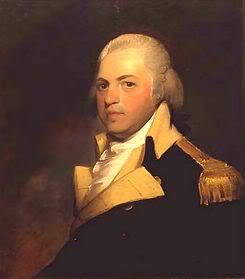
Image: General Henry ‘Light Horse Harry’ Lee
William Edward West, Artist
Meanwhile, Anne Lee was having serious health problems. She was not physically strong and is said to have suffered from narcolepsy, a sleep disorder that was little understood at the time. Victims of this disease experience frequent daytime sleepiness and sometimes fall into sleep paralysis: a deep trance-like state.
In 1804 she was taken with a severe fever and bedridden for months, and the family became alarmed when Anne did not respond to external stimuli. They summoned her doctors who conducted lengthy examinations, and finally were forced to advise her husband that they could not detect a heartbeat. Anne’s body was placed in a coffin, and three days later was put to rest in the family vault.
Some time later a sexton, bringing flowers for the deceased wife, thought he heard a noise coming from the casket – a faint voice calling for help. He quickly removed the lid from the coffin and Anne Lee looked up at him with wide eyes. Over the next several months Anne slowly regained her health.
Some historians are skeptical of the premature burial of Anne Lee, claiming that if it had occurred, they would have discovered a reference to it in the Lee family correspondence. But the story originated with members of the Lee family. And, in 1934, almost 130 years after the event, the details were printed in The Washington Post.
Although this is the kind of incident that arouses skepticism, Anne’s weakened physical condition, her narcolepsy and possible bouts of sleep paralysis could easily have caused an incorrect diagnosis of death considering the state of the practice of medicine in the early 1800s.
On January 19, 1807, fifteen months after her narrow escape from premature burial, she gave birth to a son who would be her last child to survive into maturity. The infant, named Robert Edward after Anne’s two favorite brothers, was to become another illustrious member of the famous Lee family.
By the time of Robert’s birth, Henry Lee was in deep financial trouble, and was being actively pursued by his creditors, and Stratford Hall was being denuded of property and servants to satisfy their demands. He was forced to resort to measures which were clearly immoral if not illegal, ruining family and friends in the process.
Finally, Lee’s creditors sued to have him placed in debtors prison in Montross, Virginia, in 1809. Anne was offered asylum for herself and her children by the husband of her late sister, Mildred, but she refused to abandon her husband. Left with no servants, Anne delivered food to Lee’s prison and taught her children their lessons in Stratford’s Great Hall, where they could find both heat and light from the fireplace.
With characteristic courage, in a 12-by-15 foot prison cell, Light Horse Harry Lee wrote his Memoirs of the War in the Southern Department of the United States, still the standard text on that portion of the Revolutionary War.
After Lee’s release from prison in 1810 Anne insisted on the right to choose their residence, and the family moved to Alexandria, Virginia, surrounded by several members of Anne’s extended family. Her children were thus assured an education at their neighboring plantations and later the Alexandria Academy.
In Alexandria the Lees created a new life on a modest scale made possible by a legacy from Anne’s father. They first lived in a small house on Cameron Street. In 1811, the family, including the newly-born sixth child, Mildred, moved to a house at 607 Oronoco Street owned by Anne’s brother, William.
In June 1812 the Republican Congress approved a declaration of war against England, which Federalists adamantly opposed. Henry Lee’s friend Alexander Hanson stated his opposition to the War of 1812 in his Baltimore newspaper The Federal Republican. On July 27, 1812, Hanson and other Federalists were attacked by a Democratic-Republican mob for their criticism of the war.
Henry Lee joined the besieged group and he and his compatriots were convinced to accept shelter in jail until things quieted down. This proved to be a trap and, with the militia standing idly by, Lee and his friends were violently attacked in the jail.
Lee tried to escape, but he and his friends were cut down by the mob which killed a Revolutionary War veteran, tarred and feathered at least one other and left Light Horse Harry Lee for dead. In the process of defending his friend, Lee suffered extensive internal injuries as well as head and face wounds, leaving him disfigured – even his speech was affected.
Returning to Alexandria and his family he found no relief. In hope of recuperating from his injuries, he sailed for the West Indies in 1813. In so doing, he violated the terms of his release from debtors prison, once again failing his family by causing the forfeiture of the bond put up by his younger brother, Richard Bland Lee.
Left on her own, Anne guarded her inheritance in order to provide for her children, writing infrequently to Henry, who had been, even in good times, seldom at home. She continued to have health problems. As early as 1806 she had written that she was becoming an invalid. During her stay at the Oronoco street house, she needed help negotiating the stairs. Anne apparently suffered from tuberculosis for an indeterminant time preceding her death.
Henry Lee spent the last five years of his life wandering from one tropical isle to another, an exile living on the charity of friends. The internal injuries he had received defending a friend and freedom of the press in Baltimore, kept him in constant physical pain.
When his health continued to decline, Harry attempted to return home. At last he found passage on a ship which landed him on Cumberland Island, Georgia, at Dungeness, a four-story mansion built in 1803 by Catherine Littlefield Greene, widow of Lee’s good friend and Revolutionary War hero, General Nathanael Greene. Unable to travel farther, Lee lay there until his death.
Henry Lee III died March 25, 1818, at age 62, and was buried at Dungeness with full military honors provided by an American fleet stationed near St. Marys, Georgia. His grave there on the island was twice visited by his most famous son, General Robert E. Lee, in 1862 and again in 1870.
Anne learned of her husband’s death in a letter from Henry’s brother Richard Bland Lee:
Washington, April 7, 1818
My Dear Madam
It is my painful duty to announce to you the death of your husband – He died at a friend’s house in Cumberland Island, Georgia on the 25th March. I have as yet learned no further particulars – Accept my sincere sympathies – and may God support you in this and every other trial – and may you find consolation in the virtues of your excellent and promising children –
With sincere affection and esteem, your Brother,
RB Lee
In 1913 Henry Lee’s remains were brought to Lexington, Virginia, where he was buried with his famous son, Robert E. Lee, in the Lee family crypt at Lee Chapel, on the campus of Washington and Lee University.
Of her children, Carter was closest to his father and was also favored by Anne’s brother William, who paid for his education at Harvard. Son Smith chose to go to sea, joining the US Navy. Daughter Ann Kinloch spent much of her time away from home seeking medical attention for a condition, probably tuberculosis of the bone, which resulted in the loss of her arm.
This left to Robert, the eldest remaining child, the responsibility of caring for his mother during most of the family’s stay in Alexandria. In his mother’s words he became “both son and daughter” to her. Most of the traits that we admire in Robert E. Lee – his deep religious beliefs and sense of duty – were imparted to him by his mother.
When Robert left home for West Point in 1825, Anne moved with her two daughters from Alexandria to her son Carter’s home in Georgetown, DC, where he practiced law. Finally, her health deteriorating, Anne moved to Ravensworth, the home of William Henry Fitzhugh’s widow in Fairfax County, Virginia.
Before her death Anne was able to see all of her children well settled: Carter and Smith had established careers in law and the Navy, daughter Ann Kinloch was married, daughter Mildred was engaged and Robert had graduated second in his class of 45 from West Point and was headed for a stellar military career.
Anne Carter Lee died at Ravensworth on June 29, 1829, at the age of 56. Originally buried at Ravensworth, Anne’s remains were also moved to the Lee Family Crypt with the rest of her family at Washington and Lee University, Lexington, VA.
SOURCES
Henry Lee III
Ann Hill Carter Lee
Robert E. Lee’s Mother
Wikipedia: Henry Lee III
Henry ‘Light-Horse Harry’ Lee III
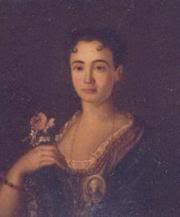

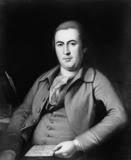
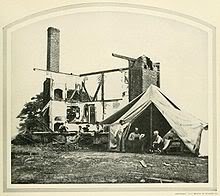
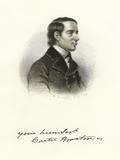

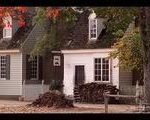
My mother was the daughter of frank Carter of cloverport Ky.